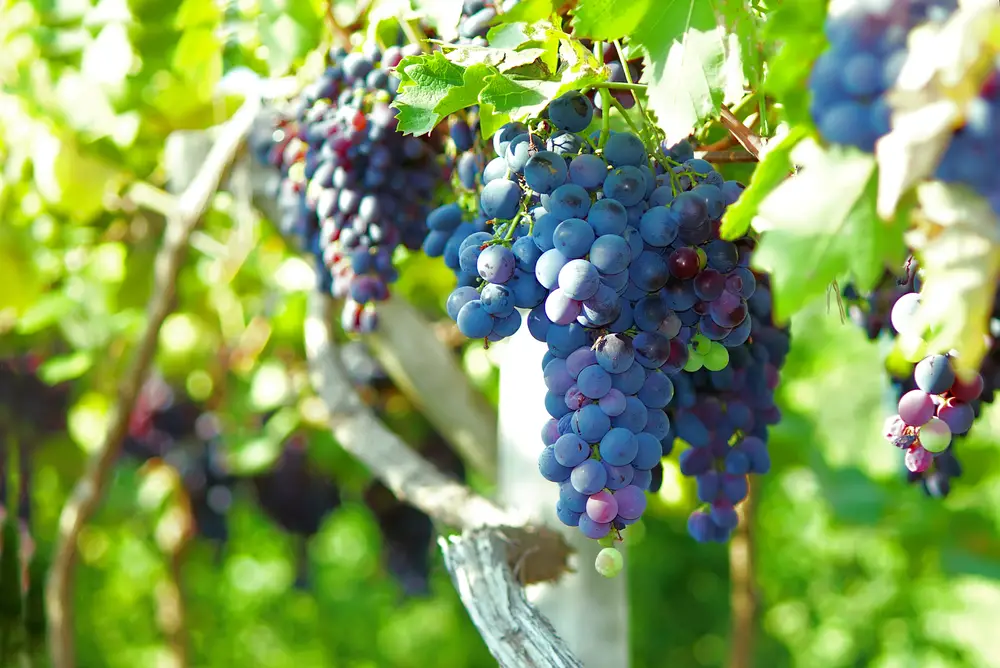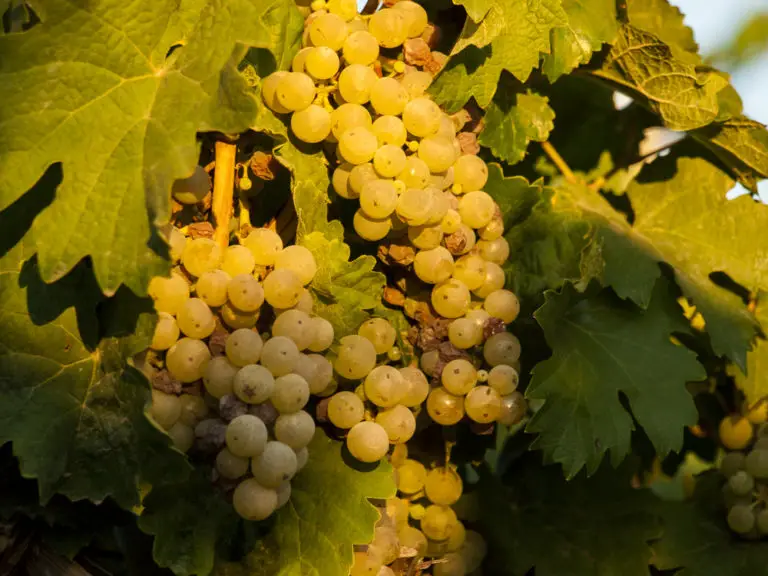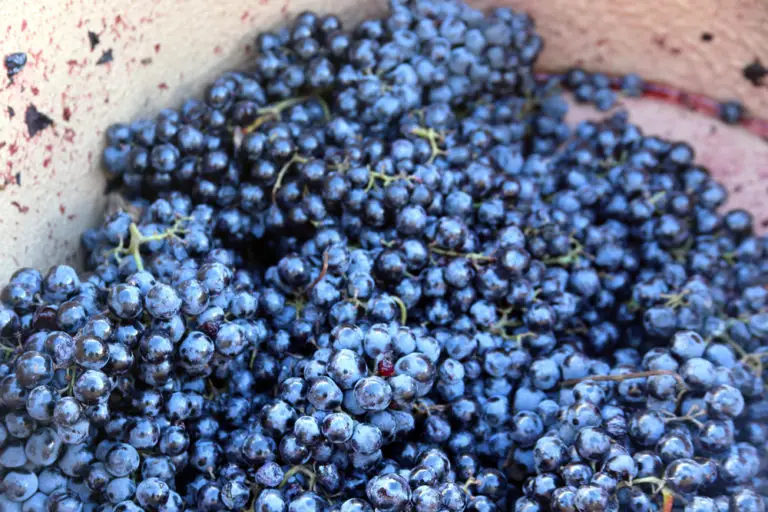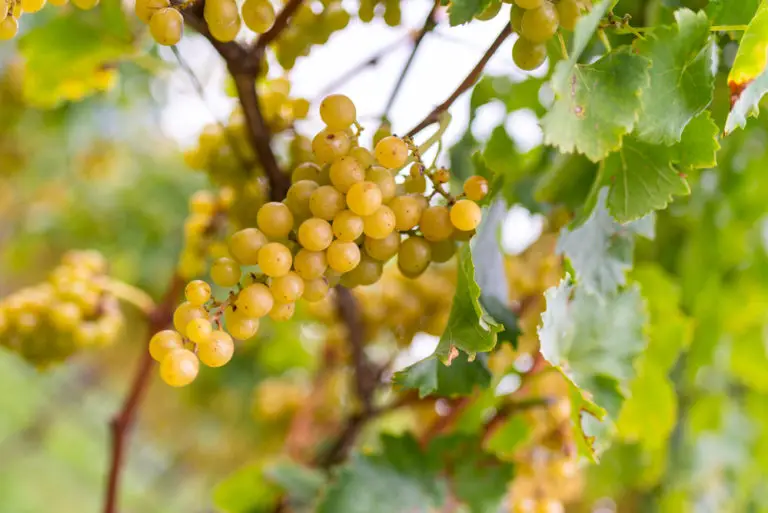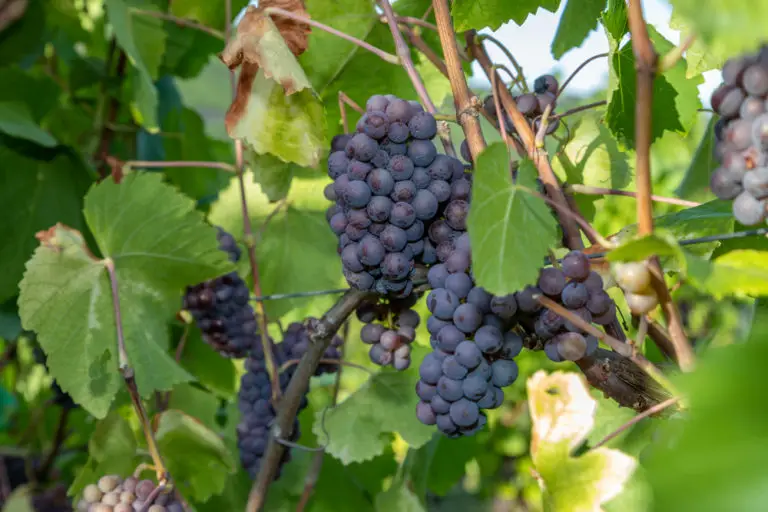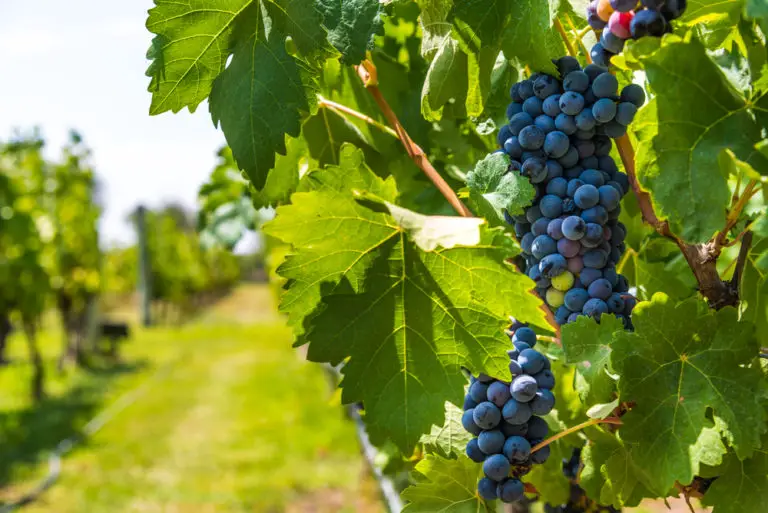Cabernet Sauvignon: The Beginners Guide (2024)
Cabernet Sauvignon is the world’s most popular red wine grape known for its durable skin, thickness, and the vine’s resistance to the elements. It was accidental breeding, which occurred in the seventeenth century between a white Sauvignon Blanc grape plant and a red Cabernet Franc grape plant.
- What is Cabernet Sauvignon?
- Known Regions for Cabernet Sauvignon
- Popular Blends of Cabernet Sauvignon
- How to Enjoy Cabernet Sauvignon?
- How Is Cabernet Sauvignon Made?
- History of Cabernet Sauvignon
- Alternatives for Cabernet Sauvignon
What is Cabernet Sauvignon?
It is a wine having a full-body, rich dark color. The alcohol content of Cabernet Sauvignon can be over 13.5%. Red Cabernet wine from places like Chile, California, and Australia can have more alcohol content and sometimes even up to 15%. This wine has a healthy level of tannin, which dries the mouth when you sip it.
Cabernet Sauvignon vs. Merlot vs. Pinot Noir vs. Malbec
People find it difficult to differentiate between Cabernet Sauvignon vs Merlot because they are the two of the most common red wine varietals in the US. But, they are different. Merlot has a “softer” flavor, is slightly less acidic, and has fewer tannins. It also has a slightly fruitier flavor and is more delicate.
Pinot Noir vs Cabernet Sauvignon: When it comes to Pinot Noir, Pinot Noir is a thin and elegant wine that grows in fewer regions. Also, they are grown in different climates and have different harvesting periods. Pinot is harvested first and is grown in colder climates, while cab sav develops better in warmer climates, and is harvested later.
Malbec vs Cabernet Sauvignon: Malbec is yet another wine that is often compared with Cabernet Sauv. The cabernet tasting notes of Malbec vary significantly by region, whereas Cabernet has a consistent taste. Also, cabernet sauvignon wine is light-bodied and has fewer tannins as compared to Malbec.
Cabernet Sauvignon Characteristics
There are three distinct Cabernet Sauvignon Characteristics:
Tannic and Thick
Cabernet grapes have thick, black skin, which is packed with tannins. Picking it is less fussy, and it also takes time to ripen on the vine.
Great for Barrel Ageing
This wine has an unusual ability to blend well with oak, both in barrel aging and fermentation. It partly facilitates the great aging for which the Cabernet is famous, with barrels mellowing the tannings and imparting aromas and flavors.
Sturdy and Small
Though the cabernet grapes are small, it is quite sturdy and grows well everywhere, irrespective of the climate. It can survive most insect infections and weather conditions, making it extremely useful for winemakers.
The structure of this wine is the acidity coupled with tannins, and young grapes are grippy with tannin, having a nice level of freshening acidity. Mostly, Cabernet Sauvignon should be consumed within a few months or years of the release.
Cabernet Sauvignon Taste Profile
Cabernet Sauvignon red wine has a varied flavor because it is grown in a wide range of regions and climates. Cab Sauv can have savory and dark fruit flavors varying from bell pepper to black pepper. The wines from the old world have different tastes when compared to the new world.
Finding a wine completely produced in the old world is rare, and it is often blended with other varieties. Cabernet Sauvignon taste is more like floral/herbals of graphite, tobacco, and violets than fruit. The wine from the New World often has a touch of fruit like Black Cherry, Licorice, and Black Pepper wrapped with a dash of Vanilla.
Popular cabernet sauvignon flavors and aromas include Crème de cassis, Mint, Eucalyptus, Black cherries, Tobacco, Blackberry, Blackcurrant, Chocolate, Blueberry, Truffle, Boysenberry, and Cedar.
Cabernet Sauvignon Ageability
Generally, Cabernet Sauvignon red wine is known for its longevity. But, normally people would like to consume it young as they are familiar with the lively fresh fruit flavors in young reds, but not so much with the dried fruit and earthier notes of slate, loam, and tobacco that emerge with time.
Cabernet Sauvignon aging softens both structural acids and tannins and provides it with a smooth texture, while the initial fruit fades and brings along earthy notes like leather and tobacco. Some people like to extend the aging because the young wine is quite tightly wound with aggressive tannins and oak.
Known Regions for Cabernet Sauvignon
Though Cabernet Sauvignon’s origin is from Bordeaux, it is not confined to France but is produced across the world. Following are some cabernet sauvignon notable regions:
Sonoma Valley, California
Mostly known for producing chardonnays, this Napa Valley neighbor also produces lush cabernet wines. This valley gets benefits from its geographical features like its proximity to the ocean and the Russian River.
Napa Valley, California
In 1976, this area became famous for cabernets at an event called the “Judgment of Paris”, where two wine judges tried a Bordeaux from France, and a cabernet from California, blindfolded.
The Cabernet was declared as the winner, astonishing the world, which believed that France has a monopoly on the world’s best red wine. Today, many wineries in California produce wines with 100% pure cabernet sauvignon alcohol percentage, unlike Bordeaux, which is known for blends.
Washington State
Cabernet Sauvignon is the most widely planted red grape variety in this region and is known for producing fruity and easy-drinking wines with fewer tannins.
Italy
Cabernet Sauvignon grapes were introduced to the Italian Piedmont region in the early 1800s. It has become famous recently because of its inclusion in “Super Tuscan” wines of Tuscany.
There are several other regions like Spain, South America, Australia, South Africa, and New Zealand that are known for Cabernet Sauvignon.
Popular Blends of Cabernet Sauvignon
Cabernet Sauvignon grapes are popular partners for blending in varietal wines. Bordeaux produces some of the popular blends like Merlot and Cabernet Sauvignon in different proportions. Malbec is yet another Cabernet Sauvignon blend known for wine with creamy, plummy, and fruit flavors. Some other popular blends of Cabernet Sauvignon from this region are Sangiovese, Carménère, Petit Verdot, Tempranillo, Zinfandel, Cabernet Franc and Syrah (Shiraz).
Popular Cabernet blend from some other regions is Washington’s CMS Blend (Cabernet Sauvignon, Merlot, and Syrah), Portugal’s Douro Tinto Blend, Greece’s Rapsani Blend, and Italy’s Super Tuscan Blend (mostly combination of Sangiovese, Merlot, Cabernet Sauvignon, and/or Cabernet Franc).
How to Enjoy Cabernet Sauvignon?
The best way to enjoy any wine is by serving them at the right temperature and paring them up with the right food. The same is true for Cabernet Sauvignon, let us look into the best way to enjoy this wine.
Food Pairings
Pairing up food with cabernet sauvignon is easy. Any red meat, especially the one served rarely, will do the trick. Younger wines are often enjoyed with an element of charring or spice to offset the tannins and sweetness, while older go well with more subtly sauced classically European dishes. Some favorite Cabernet Sauvignon food pairing is:
- Burger: The success of this pairing depends widely on the ingredients used in the burger. But it goes mostly with the one having cheese like gouda, creamy sauce, and crispy add-ons like an onion.
- Steak: Especially the fattier one like sirloin or ribeye pairs up well, when served with a rare Cabernet Sauvignon.
- Beef short ribs and other braised beef dishes: Can pair well with the wine, especially if they are cooked in red wine.
- Roast or grilled lamb: When prepared with rosemary, the grilled lamb would make a great pairing with red Bordeaux.
- Portobello mushrooms: This is an excellent option for a vegan or vegetarian who skips the meat. A big juicy grilled Portobello mushroom with garlic and butter will make a great pair with this wine. The intense flavor of the dish will also make the wine shine.
- Cheese: Harder cheese like aged cheddar or gouda goes well with cabernet sauvignon. Blue cheese like Gorgonzola also pairs up with this wine.
Temperature
The correct temperature to serve cabernet sauvignon wine is 11 degrees Celsius or 52 degrees Fahrenheit. This wine will also taste well with temperatures between 40 and 65 degrees Fahrenheit if the temperature is constant.
In an ideal situation, the wine should be kept outside at room temperature for around 30 minutes before consumption. If the wine has been kept at room temperature, then it should be kept in the refrigerator for 30 minutes. In that way, you can enjoy all of the wonderful flavors found in Cabernet Sauvignon.
While consuming the wine, the wine glass should be held from the stem to avoid warming the wine from the body’s temperature.
Stemware
There was a time when people in America used to enjoy their wines in squat, fat-lipped glasses. Fortunately, a lot of things have changed now. The glasses are more sophisticated, and there has been a rise in varietal-specific glassware. Following are some of the favorite stemware for enjoying your cabernet sauvignon:
- Nude Stem Zero Volcano Red Wine Glass: These glasses are intended for “modern living,” made with the “ion shielding” technology that imbues this otherwise fragile-looking glass with the strength to withstand day-to-day use.
- Riedel Vinum XL Cabernet Sauvignon Glasses: These glasses have a capacity of 33 7/8 ounces (or a full liter), triple the size of the generic glass. The glass is designed in a way that the shape of the bowl affects which part of the tongue and that taste buds it touches first.
- Zalto Denk’Art Bordeaux Glass: These glasses float in the hands and touch the lip like an invisible caress of a specter. They accentuate the aroma, tannins, and concentration of the wine.
- Schott Zwiesel Tritan Pure Cabernet Wine Glasses: These are relatively affordable for the high-end category. This glass offers a generous capacity of 18.5 ounces. Its dramatic angle gives it a modern touch while retaining a timeless silhouette.
How Is Cabernet Sauvignon Made?
Every wine goes through a different yet similar way of production. Most red wines are fermented with their skins on, and so is the case with cabernet sauvignon. Let us have a look at the step by step procedure:
Harvesting
The grapes are harvested between late summer to early fall, a few weeks after the green color of grapes has turned to blue-black or dark red. The grapes are hand-picked or harvested by a self-propelled machine that slaps and shakes the grapes off their stems. It is then delivered to the winery, where the winemakers sort the unwanted leaves, raisins, and debris. The remaining clusters are then passed through a crusher/de-stemmer that removes the berries from the stem and squeezes them to get the juice flowing.
Fermentation and Pressing
Some winemakers add the commercial yeast to start fermentation, while the others let the native yeast start it. The skin gets collected during this process that is blended every day to keep it moist. After fermentation, the wine is transferred to a wine press that separates the seeds and skins from it to filter out the “pressed wine.”
Maturing
This wine is usually matured in oak barrels. Winemakers use these barrels to impart flavors, textures, and aromas to the wine. The new barrel provides the wine with more enhanced flavors and spicy aromas, while an old barrel or the one made from concrete or clay is used to provide a smooth texture to it.
Filtration and Bottling
After maturing, many winemakers prefer to filter it and remove extra sediments. Then, a final adjustment of sulfur oxide is made before bottling. Then the bottles are filled with wine, corked and labeled, after removing the oxygen from it.
History of Cabernet Sauvignon
The origins of this variety of grape were unknown till the year 1996, where a group of wine researchers discovered the Cabernet Sauvignon origin. During the 17th century, in France’s southwest region, a Sauvignon blanc grape plant and a red Cabernet Franc grape plant were bred by mistake, creating the most popular grape throughout the world.
This accidental discovery leads to Cabernet Sauvignon history, and soon it was adopted in many parts of France. It became famous as it was easier to grow and much more durable. Soon, it became the champion in this region. The perfect levels of tannins allowed them to age wonderfully. It was also evident that these grapes aged beautifully in oak as they introduced new flavors to the wine.
Due to the proximity of Bordeaux with the ocean, it became more accessible to trading ships, unlike the other islands, Therefore, making this wine more popular.
Alternatives for Cabernet Sauvignon
Classic Cabernet Sauvignon is close to almost every red wine lover. It gets so much love that it was recently declared the world’s most planted wine grape variety. Despite being so famous, finding an inexpensive bottle is not easy. So to expand your palate, let us take a look at some wines similar to Cabernet Sauvignon.
Hillside estate/high elevation Merlot
Merlot can be as full-bodied and rich as Cabernet Sauvignon if you choose the right one. A Merlot with moderate alcohol (above 13.5%) and has been aged for about 16 to 24 months is the perfect alternative. Also, the highest elevation vineyards produce smaller grapes having higher tannins and intense colors. You can check out Walla Walla in Washington State and Mendoza, Argentina.
Aglianico from Italy
This wine with rich tannins and a meaty flavor makes a perfect alternative to Cabernet Sauvignon. It grows in the southern part of Italy and has long and complex flavors on the palate. The best alternative would be a vintage bottle, at least six years old, where the tannins have calmed down a bit.
Touriga Nacional from Portugal
With the ease in availability of this wine, it has gained huge popularity as an alternative type of Cabernet Sauvignon. Touriga Nacional is a black grape generally used in making port wines, but it tastes similar to Cab Sauv when they are produced as a dry wine.
FAQ
What kind of wine is Cabernet Sauvignon?
Cabernet sauvignon is an international red wine grape variety that helps in producing a full-bodied, acidic wine. It has strong tannins and usually has 13-14% alcohol.
How would you describe Cabernet Sauvignon?
This wine is full of firm tannins and a rich cabernet taste. It has fruity notes similar to blackcurrant and wood flavors like oak, cedar, and herbs.
Which is sweeter Merlot or Cabernet Sauvignon?
Although, both these wines are dry. Merlot tends to be balanced towards a slightly sweeter flavour profile in comparison with Cabernet sauvignon.
Is Cabernet Sauvignon red or white?
Cabernet Sauvignon is a dry, red wine known for its versatility and reliable choice. It is perfect whether you are unwinding at home or dining out with friends.
Why is Cabernet Sauvignon so popular?
Cabernet sauvignon got it all from the elegance, potential for fruit, consistency, aging, complexity, and acidity. It can survive most insect infections, and weather conditions make it special.
How do you drink a Cabernet Sauvignon?
The best way to enjoy it is by letting the wine aerate before drinking it. Let the wine sit for 15-30 minutes in a wine glass. It will soften the tannins and release full aromas.
Why is it called Cabernet Sauvignon?
The grape originated in the Aquitaine Department of France (includes Bordeaux) and was named Cabernet Sauvignon meaning “wild Cabernet”.
Is Cabernet the same as Cabernet Sauvignon?
Cabernet and Cabernet Sauvignon are related to each other. Cabernet Sauvignon is a cross between Sauvignon Blanc and Cabernet Franc. It is often blended with other grapes to make stately sauvignon red wines.
Do you refrigerate Cabernet Sauvignon after opening?
You should refrigerate Cabernet Sauvignon wine after opening and drink it within 3-5 days.
What does cabernet taste like?
The typical cabernet sauvignon wine taste profile is high acidity, high tannin, and medium to full body with notes of black cherry, green pepper, and spice of vanilla from oak aging.

